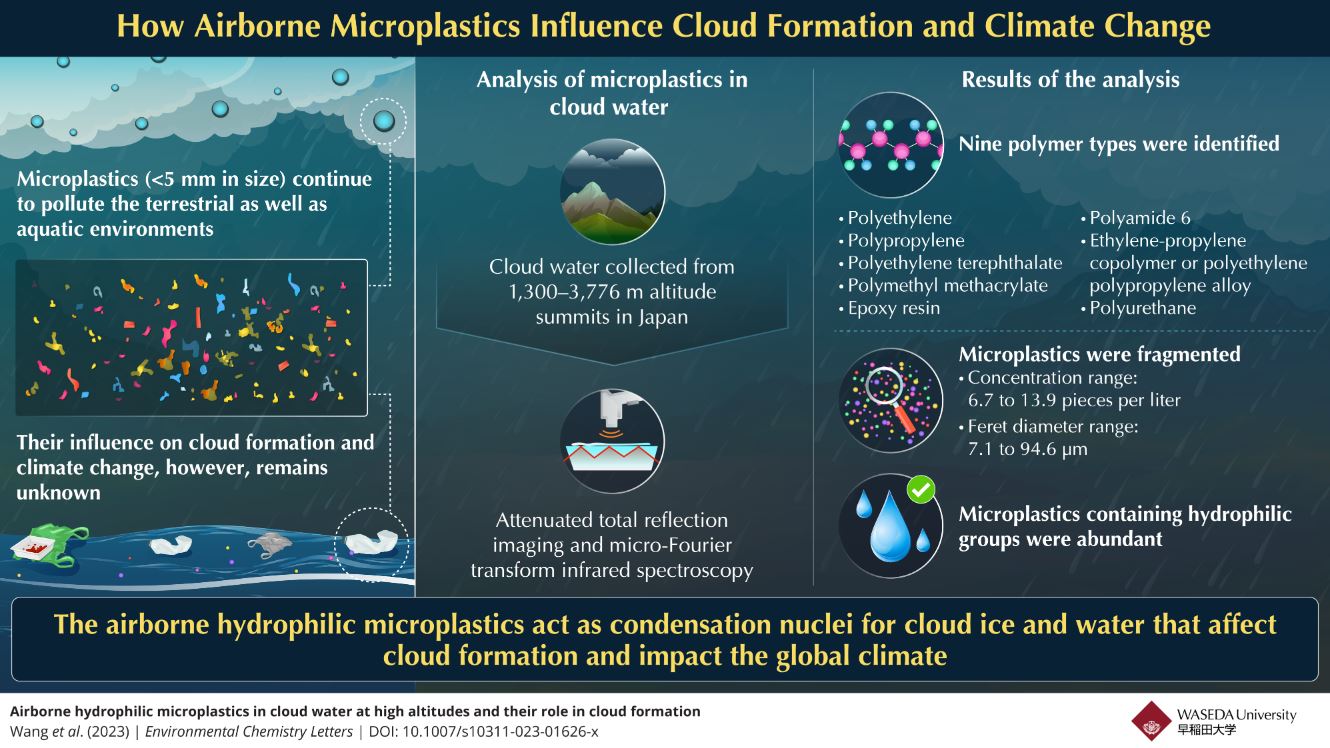Plastic production has already become a big problem for the world; It’s no surprise that many animals are in danger of extinction due to the high amount of microplastics in the oceans. But it turns out that this toxic substance isn’t just found in ocean waters; A new study conducted by Waseda University in Japan, Detected the presence of microplastics in Japanese cloud waters.
According to the Environmental Chemistry Letters article, the researchers collected samples in clouds from mountainous and high-altitude regions of Japan; especially at the summit of Mount Fuji. After a comprehensive analysis, they confirmed the presence of microplastics in clouds, most likely airborne microplastics (AMPs) through aerosolization.
Besides, The study also notes that scientists detected large amounts of microplastics in humans and animals.Even in organs such as lungs, heart, blood and placenta. The discovery was made through the use of advanced imaging techniques, including “attenuated total reflectance imaging and microscopic Fourier transform infrared spectroscopy (μFTIR ATR imaging).”
“Microplastics in the free troposphere are transported and contribute to global pollution. If the issue of ‘plastic air pollution’ is not addressed proactively, climate change and ecological risks could become a reality, leading to irreversible environmental damage and serious problems in the future,” said study leader at Waseda University and explains Hiroshi Okochi, a professor.
Microplastics in clouds
In total, the researchers found nine different types of plastic polymers and one type of rubber that is airborne in clouds. The findings also confirm that: AMPs may play a fundamental role in cloud formation, a phenomenon that may affect climate at some point.
The article explains that AMP accumulation can mainly affect the Earth’s polar regions, thereby causing significant changes in the planet’s biodiversity. Overall, they found concentrations ranging from 6.7 to 13.9 parts of microplastic per liter of water; including polyethylene, polypropylene, polyethylene terephthalate and polyurethane.

“AMPs decay much faster in the upper atmosphere than in the ground due to strong ultraviolet radiation, and this degradation releases greenhouse gases and contributes to global warming. Consequently, the findings of this study can be used to explain the effects of AMPs on future global warming projections.” ” Okochi concludes in an official statement:
Did you like the content? Stay up to date with the latest scientific studies at TecMundo and take the opportunity to discover whether biodegradable plastic is a solution or problem for the environment.
Source: Tec Mundo
I’m Blaine Morgan, an experienced journalist and writer with over 8 years of experience in the tech industry. My expertise lies in writing about technology news and trends, covering everything from cutting-edge gadgets to emerging software developments. I’ve written for several leading publications including Gadget Onus where I am an author.












